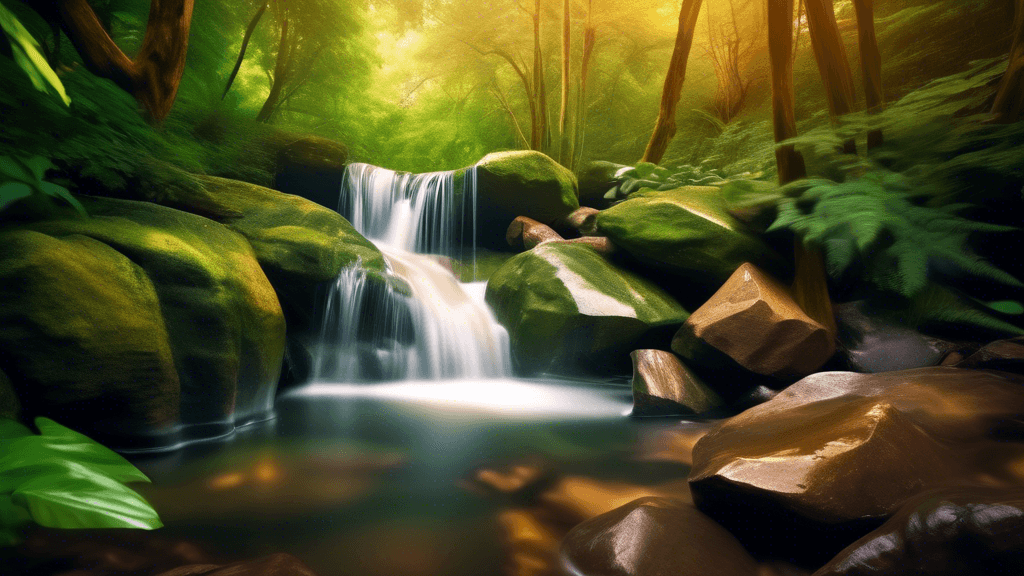
Capturing the Magic: Mastering Slow Shutter Photography at Waterfalls
Share
The Art of Slow Shutter Photography at Waterfalls
Have you ever marveled at a photograph of a waterfall, where the waters appear as silky, flowing veils? Such images are breathtaking examples of slow shutter photography—a technique that not only captures the scene but also creates an ethereal and almost magical depiction of movement. In this article, we’ll delve deep into mastering slow shutter photography at waterfalls, aiming to both inspire and instruct enthusiasts and aspiring photographers.
Understanding Slow Shutter Photography
Slow shutter photography involves using a long exposure to allow more light to enter the camera over a longer period of time. This technique is particularly effective in low light conditions or when capturing movement in a scene. When applied to waterfalls, it transforms the dynamic flow of water into a smooth, continuous stream, creating a dreamlike quality that is both artistic and captivating.
Essential Gear for Long Exposure Waterfall Photography
Before heading out to capture your waterfall masterpiece, ensure you have the right equipment. Here’s what you’ll need:
- DSLR or Mirrorless Camera: A camera that allows for manual control of shutter speed, aperture, and ISO is crucial.
- Sturdy Tripod: Stability is key in long exposure photography. A solid tripod will prevent any unwanted camera movement.
- Neutral Density (ND) Filter: This reduces the amount of light entering the lens, allowing for longer exposure times without overexposure.
- Remote Shutter Release: This helps avoid camera shake when pressing the shutter button.
- Lens Cloth: Water spray from the waterfall can speck your lens, so keep this handy to avoid water spots in your images.
Choosing the Ideal Location and Time
Selecting the right waterfall and timing can drastically affect the outcome of your photos:
- Time of Day: Early morning or late afternoon, known as the golden hours, often provides the best light for waterfall photography.
- Weather Conditions: Overcast days are perfect for waterfall photography, as the diffused light decreases the chances of harsh shadows and highlights in your images.
- Surrounding Nature: Consider the landscape around the waterfall. It can add to the composition and tell a more compelling story.
Setting the Scene: Composition Tips
Composition is paramount in creating a visually appealing image. Here are some tips to help you frame the perfect waterfall shot:
- Rule of Thirds: Position your waterfall within one third of the frame, either horizontally or vertically, to create a balanced image.
- Leading Lines: Use the flow of the river or surrounding rock formations to draw the viewer’s eye towards the waterfall.
- Foreground Interest: Including elements like rocks or vegetation in the foreground can add depth and interest to your scene.
Technical Setup for Capturing Waterfalls
Getting the technical aspects right is essential:
- Shutter Speed: Start with a shutter speed of about 1 second and adjust according to the effect you desire. Longer shutter speeds make the water look smoother.
- Aperture: A smaller aperture (higher f-number) ensures both the foreground and background are sharp.
- ISO: Keep the ISO as low as possible to minimize noise.
Remember, experimenting with different settings is key to understanding how they affect your images.
Post-Processing Techniques
Post-processing plays a pivotal role in refining your images. Adjusting contrast, sharpness, and saturation can enhance the visual impact of your waterfall photographs. Moreover, consider using software to reduce noise and perhaps add a vignette to focus attention on the waterfall itself.
Conservation Through Photography
As photographers, we have the power to raise awareness about the beauty of natural landscapes and the importance of preserving them. By capturing and sharing the splendor of waterfalls, we can inspire others to appreciate and protect these natural resources. It's not just about taking breathtaking photos; it's about ensuring future generations can witness these wonders too.
Conclusion
Capturing the magic of waterfalls through slow shutter photography is an exhilarating experience that combines technical skills with artistic vision. Whether you're a beginner or an experienced photographer, mastering this technique requires practice, patience, and passion for the natural world. So why not grab your camera, head to the nearest waterfall, and start practicing today? After all, every shot you take is a step closer to perfection—and a testament to the enduring beauty of our planet.
Ready to capture the flowing beauty of waterfalls? Go out, explore, and let nature’s wonders inspire your next masterpiece!





